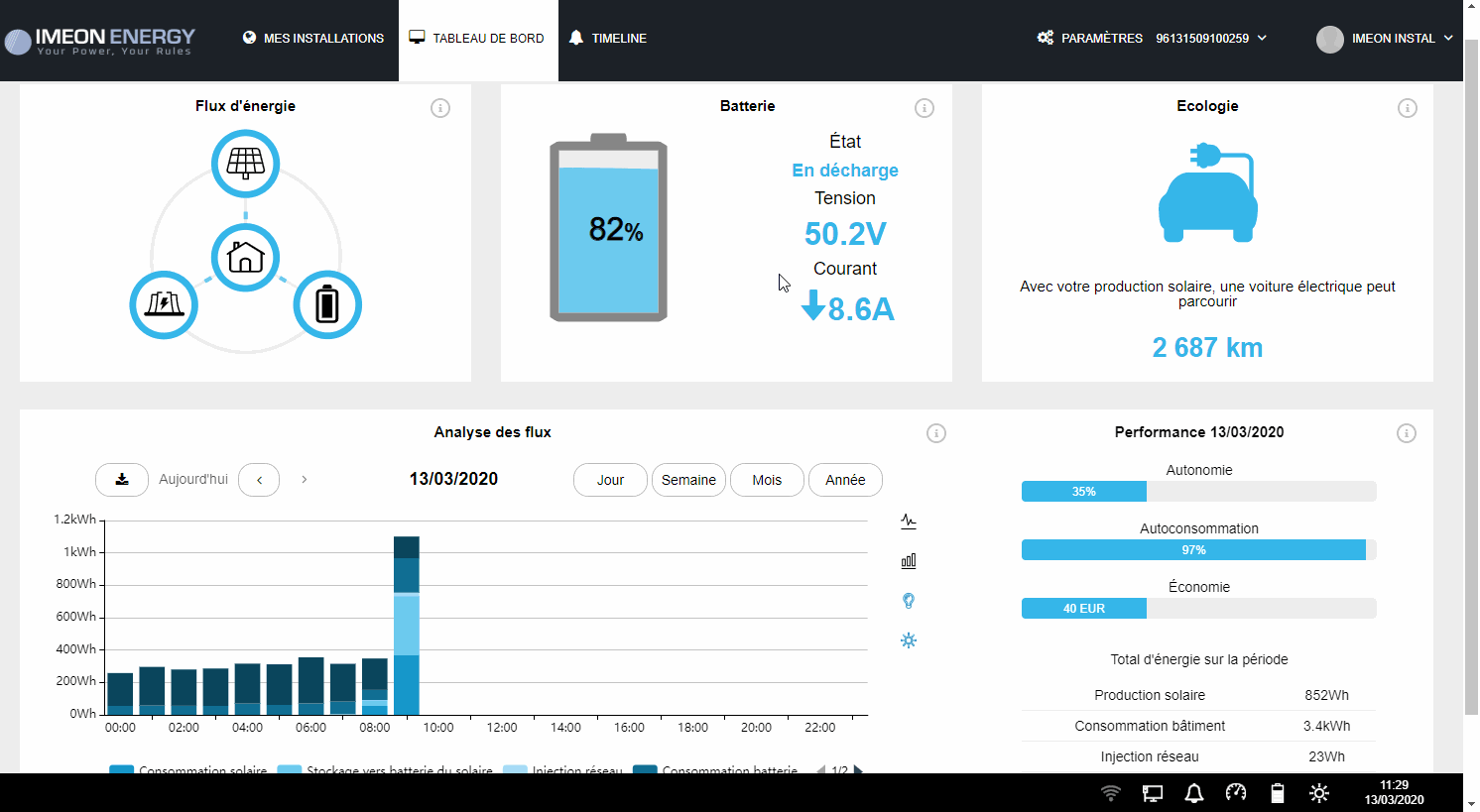The Dashboard is the central point of the monitoring interface: it outlines, with aid of uncomplicated graphical interface, all the information concerning the solar self-consumption installation. The Dashboard window contains essential information such as: the power drawn by the site, the share of electricity supplied by solar photovoltaic panels, batteries and the public distribution network as well as the rate of self-production (also called rate of autonomy).

Several terms can be used to describe the performance of a solar installation for self-consumption:
- The rate of self-production: for the user this is the most important term because it represents the autonomy of the house vis-à-vis the public electricity distribution network. It also represents the savings, in the form of consumed electricity, which the user makes thanks to self-consumption photovoltaic installation.
- The rate of self-consumption: it is the part of the electricity production generated by the solar installation which is consumed directly on site. The higher this rate, the lower the amount of electricity fed into the public grid. It is possible to optimize the rate of self-consumption by putting certain electrical appliances into operation during the day, when the solar installation generates the most energy.
- The coverage rate: this is the ratio between the total production of the solar installation and the electricity consumption of the site.
Moreover, the dashboard displays information related to the battery:
- The state of charge, also called SOC represents the level of battery charge. It’s the exact opposite of the DOD which describes the depth of discharge.
- The status of the battery: during discharge (as well as the discharge current expressed in amperes), during charge (as well as the charging current expressed in amperes) or disconnected. When the battery is blinking, it is charging and the threshold at which discharge is allowed has not yet been reached.

